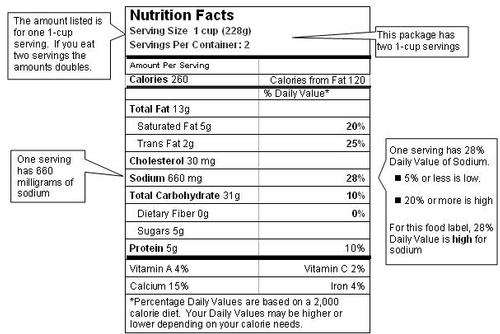 Your healthcare provider may tell you that you need to limit some nutrients in your diet such as sodium, phosphorus, or potassium. You should limit saturated and trans fats, too. Read the food label to help make healthy food choices for your kidneys.
Your healthcare provider may tell you that you need to limit some nutrients in your diet such as sodium, phosphorus, or potassium. You should limit saturated and trans fats, too. Read the food label to help make healthy food choices for your kidneys.
- Check the Nutrition Facts label for sodium
- Check the ingredient list for added phosphorus and potassium
- Look for claims on the label, like “low saturated fat” or “sodium free”
What Should I Look for on the Nutrition Facts Label?
Look for sodium on the Nutrition Facts label. Some labels will list phosphorus and potassium, too, but they do not have to.
What Should I Look for on the Ingredient List?
Look for phosphorus, or for words with PHOS, on the ingredient list. Many packaged foods have phosphorus. Choose a different food when the ingredient list has PHOS on the label.
| Ingredients: Rehydrated potatoes (Water, Potatoes, Sodium acid pyrophosphate), Beef (Beef, Water, Salt, Sodium phosphate), Wine...
This ingredient list shows that the food has added phosphorus. |
Look for potassium on the ingredient list. For example, potassium chloride can be used in place of salt in some packaged foods, like canned soups and tomato products. Limit foods with potassium on the ingredient list.
| Ingredients: Tomato juice, Vegetable juice blend, Potassium chloride, sugar, salt, citric acid…
This ingredient list shows that the food has added potassium |
Ingredients are listed in order of the amount in the food. The food has the most of the first ingredient on the list, and the least of the last ingredient on the list.
Look for Claims on Food Packages to Help You Find Foods:
| Lower in Saturated/Trans Fat: | Lower in Sodium: |
|---|---|
|
|
Sodium chloride is replaced in some foods with potassium chloride. If you need to watch your potassium, check the ingredient list
